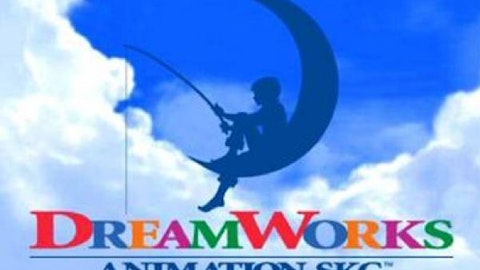When looking at risks, humans tend to misinterpret the importance of many events. For example, flying is actually safer than driving. However, because flying accidents are spectacular in nature, people tend to assign them greater weight then they deserve. Cruise lines face the same challenge, but their recent woes could give investors a way to get in on decent businesses on the cheap.
Humans tend to assign increased probabilities to large, noteworthy events, even though they are distorting the risks.
For example, in a New York Times article, 75 year old Jared Diamond highlighted that one of his biggest risks in life is dying from a fall in his shower. Why? The risk of a fall in a shower for a man of his age is 1 in 1,000. That means that in three years’ time (3 X 365 = 1,095 showers), statistically speaking, he has a good chance of falling at least once, unless he takes notable precautions. His goal was to highlight the big risks of frequently taken little risks.
Cruise lines face exactly this sort of information distortion. For example, Carnival Corporation (NYSE:CCL) had one ship sink off Italy last year, causing numerous deaths. And it recently endured even moire bad press when one of its ships caught fire, wound up disabled, and had to be towed back to port, a trip that took days. The media world was filled with the image of a young passenger kissing the ground upon her arrival, and stories of sewage running through the ship.
Carnival Corporation (NYSE:CCL) operates under the brand names Carnival Cruise Lines, Holland America Line, Princess Cruises, Seabourn, P&O Cruises, Cunard, AIDA Cruises, Costa Cruises, and Iberocruceros. It has about 100 ships that operate around the world, and it estimates that there are some 200,000 people on one of its ships at any given point in time. Despite these two disasters at sea, the company is quite large, and does a decent job of running its boats safely.
Its recent mishap, however, will take a big toll. Management recently reported that it “estimates that the total impact from voyage disruptions and related repair costs will result in an $0.08 to $0.10 earnings per share reduction in the company’s 2013 first half.” That’s not too big a hit for a company that earned over $1.70 a share last quarter, but the misconceptions caused by big events means that the direct cost to earnings may not be the biggest problem.
While the number of passengers the company services has been going up in recent years, earnings have been more volatile. Indeed, taking a cruise can be a great bargain at the right price. Events like the recent one usually mean the company needs to offer discounts to draw more customers aboard. That means that Carnival could be under revenue pressure for yet another year, since the ship that sunk off of Italy did so at the start of 2012, and the most recent event is, well, here to start of 2013.
Collateral Damage
Royal Caribbean Cruises Ltd. (NYSE:RCL) will likely feel some impact of any cruise backlash, too, even though it didn’t own the ship that was disabled at sea. In fact, this company’s top line, despite a one-year dip during the 2007 to 2009 recession, has been on a much steadier upward course than Carnival’s. The company operates the Royal Caribbean International, Celebrity Cruises, Pullmantur, Azamara Club Cruises, CDF Croisières de France, and TUI Cruises (through a 50 percent joint venture ) brands. It has over 40 ships.
While the near-term impact of the Carnival ship problem is unfortunate for Royal Caribbean Cruises Ltd. (NYSE:RCL), the longer-term effect could be a net positive. With two major issues in two years at its main competitor, Royal Caribbean may start to look like a safer option to customers. That can only help. Still, the immediate negative may require Royal Caribbean to provide discounts that it didn’t expect to persuade leery customers to come aboard. Note that the shares of this company fell in sympathy with Carnival, which could be a buying opportunity if they languish for a little while.
A More Diversified Option
Investors looking for another option in this space might consider Disney. The company is best known for its media assets and amusement parks, however it also owns a highly popular cruise line. The company’s cruise operations get lumped in with the results of its amusement parks. However, like all things Disney, the company takes a different approach to the industry.
Disney’s cruises tend to be more expensive than competitors’, and driven more by customer service, a Disney hallmark. Additionally, they are geared heavily toward family vacationing. These facts, coupled with the company’s liberal use of its storied characters, truly sets Disney cruises apart from those of Carnival or Royal Caribbean. Moreover, because Disney isn’t usually associated with the cruise industry, disasters don’t usually have much of an impact on the company’s image.
While the Disney fleet is tiny compared to the two largest players, it should benefit from industry growth without the inherent risks. That said, Disney shares are usually priced at a premium because of its high operating standards and impressive business performance, and it isn’t a direct play on the space. That extra diversification, however, could be a good thing.
Bigger Concerns
There are, of course, bigger concerns in the cruise industry, most notably the cost of fuel and employees. For those with international exposure, geopolitical issues can also pose issues. The economy is always a concern, as customers are less likely to spend thousands on anything when incomes are tight. So investors need to keep a big picture view of the space when considering an investment.
Big news items like a disabled ship, however, can have long-lasting emotional impacts. And two years with high profile problems starts to look like a trend. That could be an opportunity for investors to get into these stocks.
The article Why Cruise Lines Face Spectacular Risks originally appeared on Fool.com.
Copyright © 1995 – 2013 The Motley Fool, LLC. All rights reserved. The Motley Fool has a disclosure policy.






